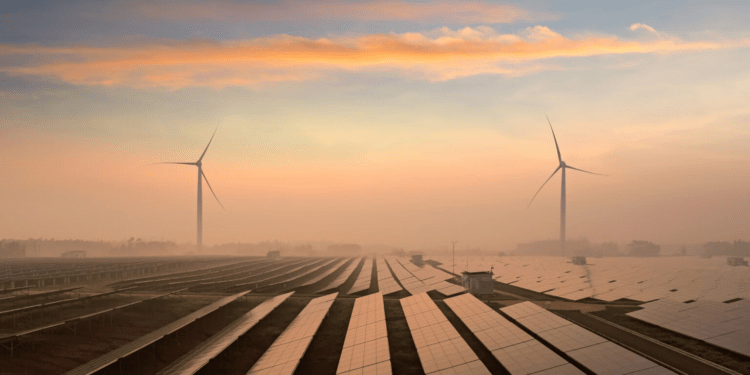According to a new report from the International Energy Agency (IEA), solar PV and wind power are expected to lead the most significant annual increase in new renewable capacity ever, fueled by the global energy crisis. Renewable power capacity is projected to grow by a third this year, driven by factors such as increasing policy momentum, higher prices of fossil fuels, and concerns about energy security.
The growth in renewable capacity is set to continue into next year, with the total renewable electricity capacity worldwide reaching 4,500 gigawatts, equivalent to the combined power output of China and the United States. The report states that global additions of renewable power capacity are anticipated to soar by 107 gigawatts in 2023, marking the largest absolute increase ever and bringing the total capacity to over 440 gigawatts. This expansion is taking place in major markets across the world.
Europe is particularly focusing on renewable energy as a response to the energy crisis. At the same time, the United States and India are also expected to experience significant increases in renewable capacity due to new policy measures. China, already a leader in renewable power, will account for nearly 55% of global additions in both 2023 and 2024.
Solar PV installations will contribute the majority (two-thirds) of this year’s increase in renewable power capacity and are projected to continue growing in 2024. The report highlights the expansion of large-scale solar PV plants, as well as the increasing adoption of smaller systems like rooftop solar PV, which is driven by higher electricity prices and empowers consumers to reduce their energy bills.
Manufacturing capacity for solar PV production is expected to increase to 1,000 gigawatts by 2024, with China leading the way and the United States, India, and Europe diversifying their supply. These trends indicate that the world will have sufficient solar PV manufacturing capacity by 2030 to meet the annual demand projected in the IEA’s Net Zero Emissions by 2050 Scenario.
Wind power additions are also forecasted to rebound sharply in 2023, growing by almost 70% compared to the previous year, following a slowdown caused by COVID-19 restrictions and supply chain challenges. However, future growth in 2024 will depend on increased policy support to address permitting and auction design challenges. Unlike solar PV, wind turbine supply chains are not growing rapidly enough to match the rising demand due to rising commodity prices and supply chain issues.
The report revises the forecast for renewable capacity additions in Europe upward by 40% following Russia’s invasion of Ukraine, as many countries sought to reduce their reliance on Russian natural gas by boosting solar and wind uptake. The growth in Europe is driven by high electricity prices, making small-scale rooftop solar PV systems financially attractive, as well as increased policy support in key European markets like Germany, Italy, and the Netherlands.
The installation of solar PV and wind capacity in the EU is estimated to have saved electricity consumers EUR 100 billion during the period from 2021 to 2023, displacing more expensive fossil fuel generation. Wholesale electricity prices in Europe would have been 8% higher in 2022 without the additional renewable capacity.
While wind and solar PV have become more competitive, government policies need to adapt to changing market conditions, particularly in renewable energy auctions, which had a record 16% under subscription in 2022. It is also crucial to focus on timely planning and investment in grids to effectively integrate high shares of variable renewables in power systems. Several countries in Europe, such as Spain, Germany, and Ireland, are expected to see wind and solar PV’s combined share of their overall annual electricity generation rise above 40% by 2024.





